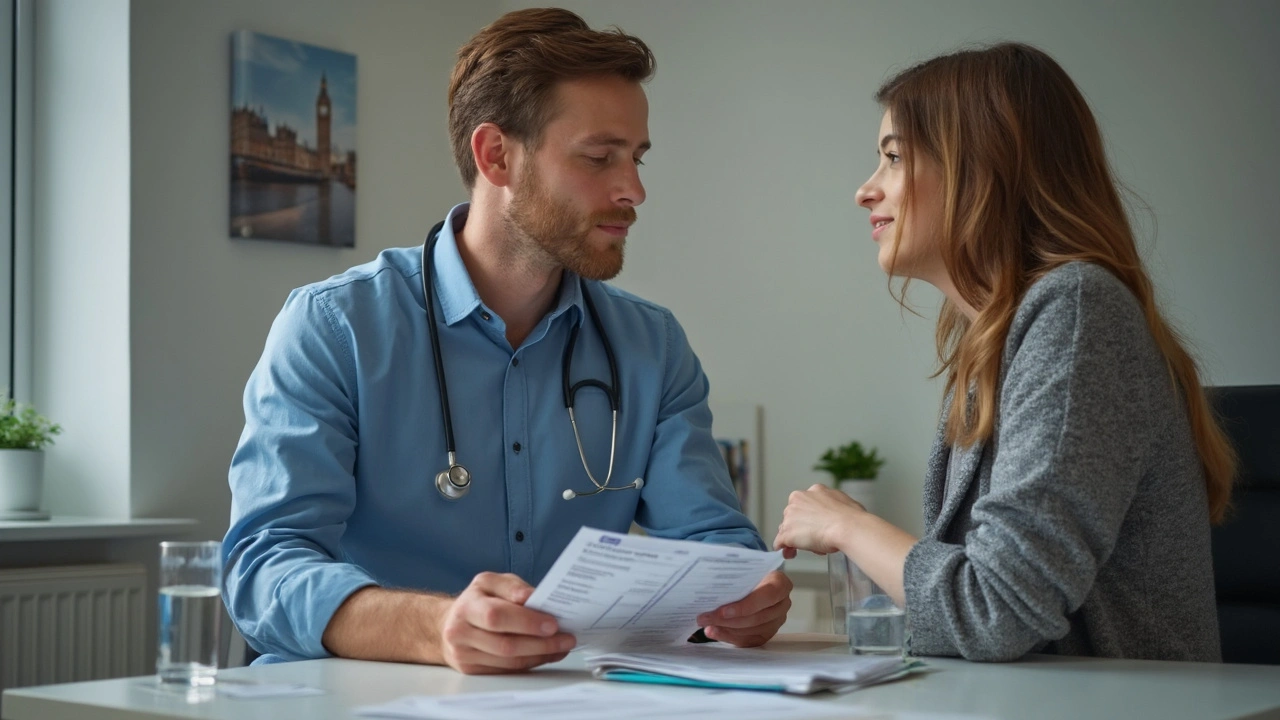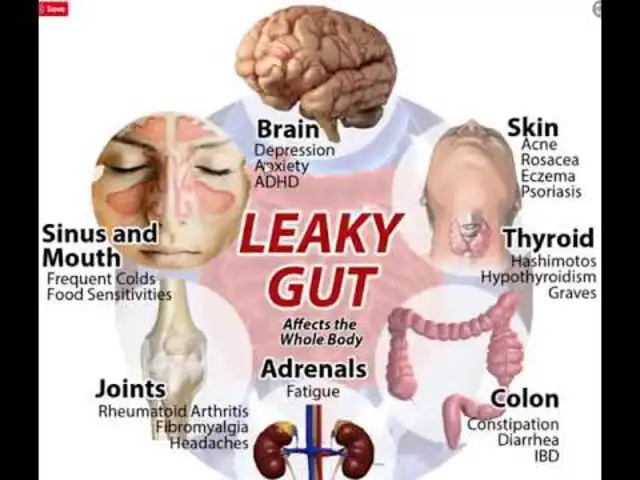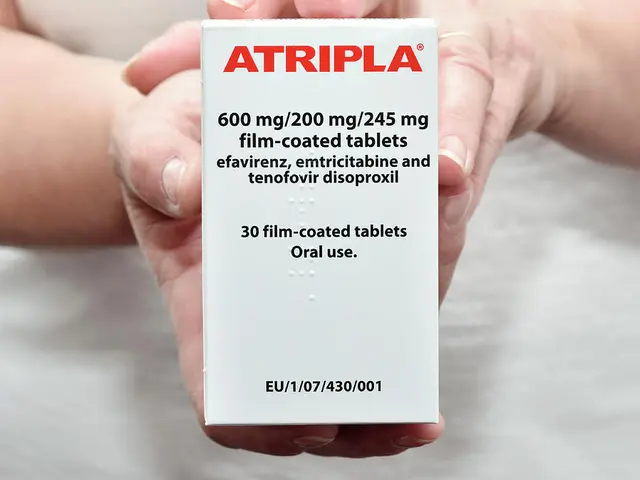
Fever creeping up, face feeling like someone punched you with a pillow, and every sniffle makes your eyes water. Nothing drags down your mood like a sinus infection. But hey, maybe it’ll just go away if you keep the tissues handy and binge a few shows. Or—should you start thinking about a round of prescription antibiotics, like ampicillin, to avoid weeks of sinus torture? Striking the right balance between letting your body heal and getting medical help is trickier than it sounds. Are you one hot cup of tea away from relief, or is it time to call your doc?
Understanding Sinus Infections: What’s Really Happening Up There?
You know the feeling—pressure building behind your cheeks and forehead, runny nose, maybe even losing your sense of smell. Sinus infections, or sinusitis, hit when the tissue lining your sinuses gets inflamed. Most of the time, these attacks come after a viral cold. In fact, studies show that nine out of ten adults with acute sinus symptoms simply have a lingering viral cold, not a bacterial infection. That means, in most cases, you don’t need antibiotics at all.
Why do antibiotics often get brought up, then? Bacterial sinus infections can and do happen, just not as often as people think. The difference is crucial: viruses laugh at antibiotics, but bacteria can be crushed by the right prescription. Doctors often face pressure to write scripts, but overusing antibiotics leads to resistance—meaning, our best drugs lose their punch. It’s a tough spot, especially when you feel awful.
Typical viral sinusitis clears up on its own within 7 to 10 days. Your immune system does the heavy lifting if you give it time. But when a bacterial infection muscles in, it likes to stick around or even get worse, making you feel like your cold’s evil twin is living in your head.
Here’s a wild fact: Only about 2% of viral sinus infections morph into full-blown bacterial ones. When symptoms drag out or go backwards (like you start to feel a bit better, then wham, everything gets worse), that’s when you should wonder if ampicillin or another antibiotic is worth considering.
Home Care: Self-Treatment Without the Overkill
The temptation to call it quits after three days and beg your doc for antibiotics is real. Most of the time, though, you can ride this out at home and feel a lot better fast with the right gadgets and tricks. Here are the golden rules for home care:
- Hydrate: Keep the mucus thin. Water, herbal teas, broth, or juice—your sinuses don’t care as long as you drink.
- Steam: A hot shower or basin of steamy water feels amazing. Drape a towel over your head and inhale deeply.
- Saline Rinse: Neti pots and saline sprays help wash out thick gunk and allergens that keep you stuffed.
- Warm Compresses: A heated washcloth across your cheeks or forehead cuts the pain and opens up stubborn passages.
- Rest: Your body fights hardest when you let it chill.
- Pain Relief: Acetaminophen or ibuprofen lowers fever, calms swelling, and lets you sleep.
This combo does wonders for the vast majority of folks. In fact, if you asked a group of 100 adults with classic sinus symptoms, 85 would start getting better by week’s end with just these basics. No antibiotics, no drama. Kids, by the way, bounce back even faster when you keep their noses moist (hard as it is for them to take a saline rinse without screaming).
But not every case is so simple. If things aren’t improving—or (worse) if symptoms turn weird or severe—you need to consider that your infection could be bacterial, not just viral.

Ampicillin or Not? How to Know When Antibiotics Are Worth It
When your sinuses just won’t quit, how do you zero in on whether you need an antibiotic like ampicillin? The rule of thumb in the U.S. and Europe hinges on a couple of clear signals. Not every runny nose turns into a science experiment for bacteria, and studies back this up. Here are the big red flags:
- Symptoms last longer than 10 days without improving. Still feeling crummy after day 10? Bacteria may be in play.
- Severe onset of symptoms. Say you spike a high fever (102°F/39°C or more) and have purulent nasal discharge for over three days. That’s a huge hint your body’s dealing with more than leftover viral debris.
- “Double-sickening”. Maybe you felt like you were getting better after a week, but then things went south—worse pain, green or yellow mucus, return of fever. It’s classic bacterial territory.
- Facial pain/swelling, vision changes, or confusion. These are rare, but they’re emergency signs. If you get them, go to the ER—bacterial infections can sometimes spread and become dangerous.
Doctors don’t just go by a hunch. They look for those symptom patterns before they bring out the prescription pad. And when it comes to antibiotics, ampicillin is a trusty old workhorse. It’s effective against the common bacteria behind sinus infections, cheap, and usually well-tolerated—unless you have a penicillin allergy.
But there’s no free lunch. Ampicillin, or any antibiotic, can upset your stomach, wreck your gut bacteria, or—most worrisome—help fuel antibiotic resistance. This is why most doctors urge you to resist the urge to start antibiotics “just in case.”
Curious about dosages and what all to expect if you actually do need to treat sinus infection with ampicillin? This resource breaks it all down, from who should avoid it to how long you’ll be on the pills. The short version: Most people take ampicillin for 7-10 days if prescribed. Finish the entire course, even if you start to feel better mid-way—bacteria are sneaky and can come roaring back if you stop early.
"Antibiotics are often expected by patients seeking relief, yet they offer limited benefit for uncomplicated, acute sinusitis. Overprescribing risks outweigh the rewards," says Dr. Michael Benninger, Chairman of the Cleveland Clinic Head & Neck Institute.
Some extra details to keep in mind if you do get ampicillin: It doesn’t mix well with alcohol, take with food if it messes with your stomach, and if you have any history of allergic reactions to penicillin family antibiotics, steer clear and let your doctor know ASAP. List any weird rashes, breathing trouble, or swelling right away.
Here’s a quick table showing the average recovery times, with and without antibiotics, for typical sinus infections:
| Type | Antibiotics Used? | Average Recovery Time |
|---|---|---|
| Viral Sinusitis | No | 7-10 days |
| Bacterial Sinusitis | Yes (e.g., ampicillin) | 10-14 days (often improves in 2-3 days after starting antibiotics) |
Bottom line: Antibiotics like ampicillin give rapid, real results only if your infection crossed into bacterial territory. You’ll usually notice genuine improvement within 48 hours of starting treatment, but finish your full course to seal the deal.
Prevention & Red Flags: Smarter Choices for Next Time
Let’s be real—if you’ve had one nasty sinus infection, you’ll do anything to dodge another. Turns out, staying hydrated and keeping allergies under control makes a bigger difference than most folks realize. If you smoke, quit; studies show that smokers get more sinus infections and the infections stick around longer. Running a humidifier, especially in winter, keeps your nasal passages from drying out and helps your body trap bugs before they take hold.
For folks prone to chronic sinusitis, doctors sometimes recommend saline irrigation almost daily. It’s not glamorous, but it works. Quick tip: Use boiled or distilled water for your neti pot—nobody wants a new infection from tap water bugs.
Watch for a few serious red flags that scream “doctor now”: sudden vision changes, confusion, severe swelling around the eyes, or a stiff neck. These are super rare but signal a possible complication, like the infection spreading from sinuses to deeper tissues. Don’t play hero, get help immediately.
One thing a lot of folks get wrong is assuming all green mucus means “bacteria,” but it’s actually your immune system’s battle scars—viral infections can cause thick, cloudy, or green gunk too. Don’t get tricked into chasing antibiotics for a color change alone.
Some folks swear by “natural” remedies, and while things like eucalyptus oil steam or spicy food might make you feel better in the moment, they’re not curing the infection. Stick with proven self-care or medical treatment.
If you’re using antibiotics, don’t share them with family or stash them “just in case” for another round—the dose and duration need to be spot on for your case, or you risk doing more harm than good. Dr. Benninger’s quote up above isn’t just for show—the more selective you are with antibiotics, the less likely you are to end up with a raging superbug sinus infection years down the line.
Finally, know your body. If your symptoms line up with the bacterial markers we’ve talked about and you’re not improving, it’s worth calling your doctor. Write down how long your symptoms have gone on, how they’ve changed, and if anything has made them worse. That helps your provider figure out what’s actually going on (and saves both of you some guesswork).
Christine Watson
This guide is seriously helpful! I've always been confused about when I actually need antibiotics for sinus infections. It makes such a difference to know the big warning signs instead of just guessing or rushing to a doctor. I like that it emphasizes rest and fluids first—sometimes we just want a quick fix, but patience is key.
What also struck me is the explanation about ampicillin. It’s good to understand why doctors don’t jump to prescribing it right away. Antibiotic resistance is real, and it feels empowering to avoid unnecessary meds.
Has anyone here tried using just home care and successfully fought off a sinus infection without antibiotics? I’d love to hear your strategies because it’s comforting to know what's effective before things get worse.
Overall, this really makes me less anxious about treating mild sinus infections. Thanks for breaking it down so clearly!
Macy Weaver
Totally agree! The whole topic around antibiotics is super confusing for many, including me. Like, how do you know when your sinusitis is actually bacterial and requires meds versus just viral or allergy-related stuff? This post helps simplify that.
It also made me wonder how often doctors prescribe ampicillin 'just in case.' Is this encouraged in certain regions more? I ask because sometimes I feel like the doctors just hand out prescriptions to be safe, but I’m not sure that’s the best approach long term.
Plus, I appreciate the detailed symptoms checklist. I honestly didn’t know that face pain and fever are such key indicators for when to see a doc.
Do any healthcare professionals here want to chime in on the overuse of antibiotics for sinus infections? It’s such a delicate balance to strike.
James McCracken
Hmm, isn't it a bit naïve to think home remedies alone can suffice for sinus infections often? Sure, there's an argument against antibiotic over-prescription, but realistically, many sinusitis cases that linger tend to be bacterial. Ampicillin and other antibiotics? They're not villains but rather necessary tools.
It's a false dichotomy to pit 'home care' against medical treatment when both have their places. The article simplifies something that actually requires nuanced clinical judgment.
Also, the idea that all sinus infections are viral or should resolve on their own ignores those insidious chronic cases that escalate into complications.
Just my two cents, but I think promoting antibiotic hesitancy too hard could end up hurting people who genuinely need proper treatment.
Evelyn XCII
Oh sure, because everyone has a magic doctor on speed dial who can instantly diagnose if your sinus is bacterial or not, right? Spoiler alert: no.
This reminds me of the last time I had a sinus infection and was told to just "wait it out." Spoiler: I ended up miserable for two weeks and like a walking zombie. So yeah, home remedies are cool and all, but sometimes you just want the antibiotics to actually feel human again.
It’s like some folks just love to glorify suffering for the sake of avoiding antibiotics. News flash: not everyone wants to roll like that.
Your mileage may vary, obviously. But I’ll definitely listen to my doc if they say it’s time for ampicillin. No shame here.
Nina Vera
Okay, this topic always gets me because sinus infections can be THE WORST. I mean, hot showers and fluids are great and all, but sometimes your head feels ready to explode, and that's when you want that sweet ampicillin relief.
I think this guide does a good job setting expectations but, ugh, the waiting game when you’re miserable? Torture.
Also, what about natural or alternative remedies? Has anyone tried essential oils or nasal rinses? Would love to know if those are legit or just hype.
Anyway, thanks for shedding light on when antibiotics make sense vs when they don’t. This stuff isn’t talked about enough, honestly.
Daniel Buchanan
This article nails an important point: antibiotics like ampicillin should not be the default treatment for every sinus infection. As someone who mentors on health literacy, I find that people often demand prescriptions without understanding risks.
Antibiotic resistance, allergic reactions, and side effects are real issues. This is why knowing when to seek medical help versus relying on supportive care is critical.
Also, that emphasis on watching for fever and severe pain is excellent advice. Sometimes patients ignore these signs until symptoms worsen, making treatment more complicated.
It’s ultimately about empowering patients to make informed decisions, so kudos for this straightforward guide.
Lena Williams
Honestly, I've always had this drum I beat in my head about antibiotics being a "last resort"—mostly because of the rise in resistant bacteria globally. Still, it can be confusing when a sinus infection just won’t quit.
One thing I try is paying close attention to how long the symptoms last. Anything beyond 10 days, especially if it’s getting worse or accompanied by fever, I treat as a red flag and then see my doc immediately.
Meanwhile, I do steam inhalation daily, drink tons of fluids, and keep my head elevated while sleeping. It’s a slow process but effective for me.
Im curious though—anyone had success JUST with antibiotics from the start? Or do most people try home care first?
Sierra Bagstad
I would like to emphasize that indiscriminate use of antibiotics like ampicillin is scientifically unjustifiable in the vast majority of uncomplicated sinusitis cases. The vast majority are viral in origin, and self-limiting.
Prescribing antibiotics without clear evidence of bacterial infection contributes to antimicrobial resistance, a significant public health threat. The guide correctly delineates the clinical features indicative of bacterial sinusitis where antibiotic therapy is warranted.
Patients and clinicians alike should adhere stringently to evidence-based guidelines to curtail unnecessary pharmacologic intervention. Symptomatic treatment including hydration, analgesics, and nasal irrigation remain foundational.
Thank you for disseminating this rational approach.
Kemari Nielson
Great post. It really gets to the heart of what people wrestle with during sinus infections. The thing is, antibiotics like ampicillin absolutely have a place, but only when justified by clear symptoms and sometimes diagnostic confirmation.
The concept of 'watchful waiting' without immediate antibiotics is scientifically validated and reduces unnecessary medication use and adverse outcomes.
Anyone here ever been pressured by a healthcare provider to take antibiotics unnecessarily? How did you handle that?
It's important we understand and respect both patient concerns and best clinical practices.
Steve Helsel
Ugh, honestly most sinus infections I've had cleared up with just rest and fluids. Not a huge fan of popping antibiotics unless it's super obvious what's going on.
This article looks solid — good to see clear advice avoiding the med overuse trend.
Different strokes for different folks I guess, but yeah, antibiotics are sometimes overprescribed just to make patients feel like they're getting *something*.
Just my two cents.
Steve Moody
May I interject with the observation that the nuance of this discourse might be lost on some? The pathophysiology of sinusitis is often oversimplified in lay discussions, and antibiotic stewardship is a critical consideration in contemporary medicine.
It is rather vital to grasp that ampicillin’s efficacy is limited to bacterial infections—viral or allergic etiologies are impervious to such interventions.
Thus, educating patients remains paramount to avoid indiscriminate use and the attendant public health implications arising therefrom.
This post admirably attempts to elucidate these points with commendable clarity.
Christine Watson
Thanks everyone for the thoughts so far, especially those sharing their personal experiences. It’s so true that symptoms and individual situations vary, which is why this isn’t a one-size-fits-all question.
I also appreciate the more technical insights on antibiotic stewardship. It’s a reminder that while we want quick relief, we must be mindful of the bigger picture regarding resistance and side effects.
I’m definitely going to keep an eye on those red flag symptoms closely and try home care first when things are mild. But if it worsens or drags on, I won’t hesitate to see a doctor for possible ampicillin.
In the meantime, I’m curious if anyone has tips on how to manage the pain and pressure at home without meds? I find that part really rough sometimes.






Write a comment